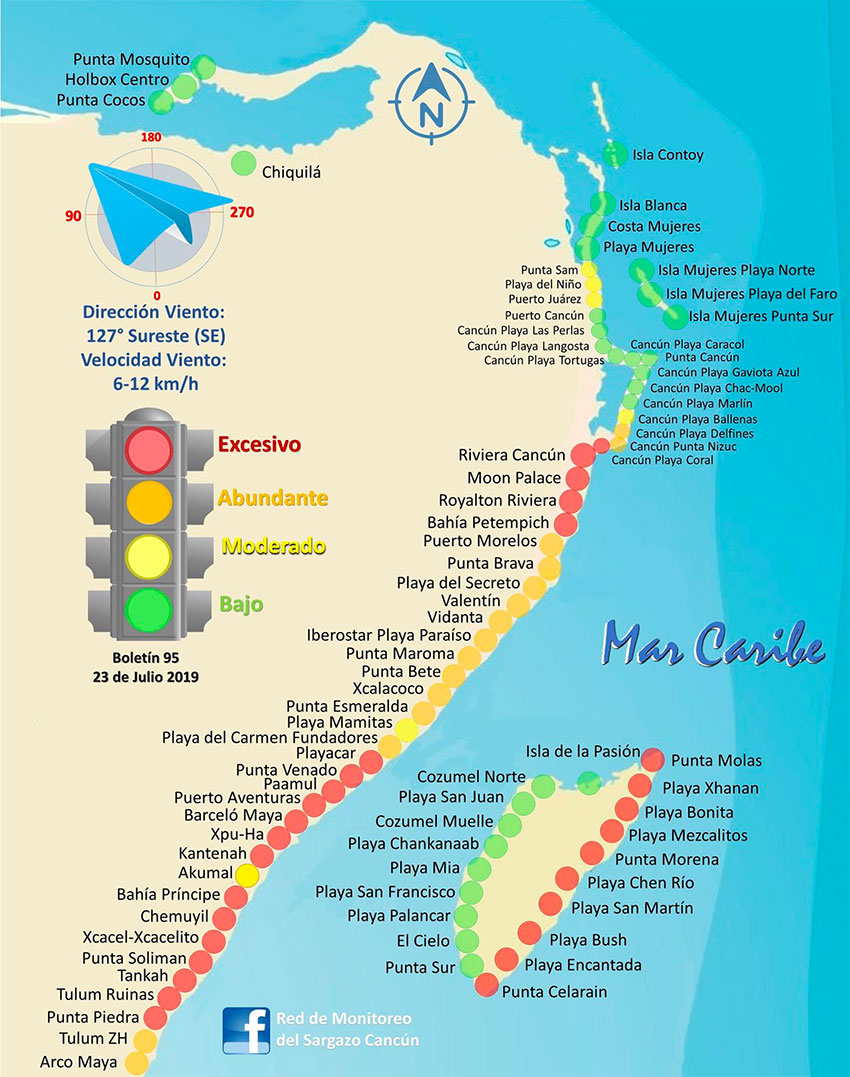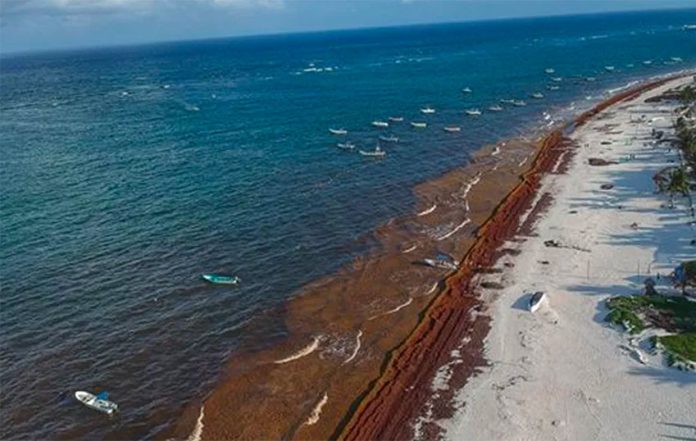There were excessive amounts of sargassum at 33 coastal locations in Quintana Roo yesterday, according to the Cancún sargassum monitoring network, but the number declined slightly today to 29.
The non-governmental organization’s report showed that Riviera Cancún, Moon Palace, Playacar, Xpu-Ha, Bahía Príncipe, Tulum Ruinas and the entire east coast of Cozumel are among the destinations affected by large amounts of the seaweed.
The monitoring network uses a four-tier “traffic light” system to show the extent to which Quintana Roo beaches are affected by the smelly weed. The number of locations with a red light increased to 33 from 19 in just 24 hours.
Most beaches between Puerto Morelos and Playa del Carmen are currently affected by “abundant” amounts of sargassum, the second highest tier on the network’s system.

Although the sargassum situation quickly worsened this week, network chief Esteban Amaro said that more beaches were affected by excessive quantities of weed in April and May.
Still, he charged that the navy’s strategy to combat the arrival of the macroalgae is not working.
“The navy’s efforts are practically being exceeded. I believe that the navy has [just] one [sargassum-gathering] vessel and obviously for 700 kilometers of coast in Quintana Roo, it’s not enough . . .” Amaro said.
The Secretariat of the Navy (Semar), which was given the responsibility for leading the efforts to combat the arrival of sargassum in early May, reported that between the start of that month and July 15, it collected almost 39,000 tonnes of sargassum.
Of that amount, just 219 tonnes were removed from the sea, indicating that the anti-sargassum strategy has been largely ineffective in preventing the seaweed from reaching Quintana Roo beaches.
Semar announced that it will build four new catamaran-style boats designed to collect sargassum from the sea but it is unclear whether any of them will be ready to assist in the fight against seaweed this season, even though navy chief José Rafael Ojeda said the first would be finished by July 24.
The navy also said earlier this year that it was looking at purchasing additional sargassum barriers but it has made no further announcement about the plan.
The mayor of Benito Juárez (Cancún) said that Semar asked her government to contribute 23.8 million pesos (US $1.2 million) to the efforts to combat the arrival of sargassum but added that no money would be transferred until there was more clarity about when the new sargassum-gathering vessels will be ready.
“Their plan is to collect sargassum in the sea. We’re waiting for them to tell us when the sargassum vessels will arrive . . .” Mara Lezama said.
Source: El Economista (sp)
UPDATE (5:45pm CDT, July 24): Rain, wind and ocean currents have reduced sargassum quantities significantly since Tuesday. The sargassum monitoring network map, published Wednesday afternoon, shows just five locations where the seaweed is excessive. All are on the east coast of Cozumel.
